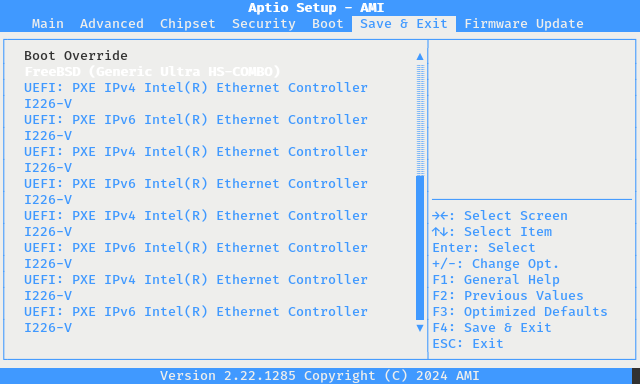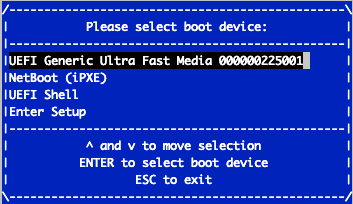Reinstalling pfSense Plus Software¶
This guide uses the Netgate Installer to install pfSense® Plus software on a Netgate 4200 device.
Note
pfSense® Plus is preinstalled on Netgate appliances. It is optimally tuned for Netgate hardware and contains features that cannot be found elsewhere, such as ZFS Boot Environments, OpenVPN DCO, Built-in IPFIX Export, and the AWS VPC Wizard.
Download Installation Media¶
The Netgate Installer can be downloaded from the Netgate Store using a Netgate Store Account.
See also
For a more detailed walkthrough of the download process, see Download Installation Media in the pfSense Software Documentation.
The image to download for this device is:
netgate-installer-amd64.img.gz
Prepare Installation Media¶
Next, write the installation image to a USB memstick.
See also
Locating the image and writing it to a USB memstick is covered in detail under Writing Flash Drives.
Connect to the Console¶
The installation process is interactive and utilizes the console. Follow the directions under Connect to the console to configure and use the console.
Boot the Installation Media¶
Before starting, determine the platform firmware type (AMI or SBL).
The procedure to boot once from alternate media differs based on the firmware type. Follow the section which matches the firmware type on the device.
AMI¶
Insert the memstick into the USB port on the right side and boot the device.
Wait for the boot prompt to appear.
Press
Escto enter the firmware configuration.Use the left/right arrow keys to select the Save & Exit header.

AMI firmware Boot Override Selection¶
Use the up/down arrow keys to move into the Boot Override section.
Select the entry for the USB memstick.
The entry is likely at or near the bottom of the list. The name of the entry varies by brand/make/model of the USB memstick.
SBL¶
Insert the memstick into the USB port on the right side and boot the device.
Wait for the boot prompt to appear.
Press
F7to enter the boot manager menu.
SBL Boot Manager Menu¶
Use the up/down arrow keys to highlight a device in the boot manager menu.
Press
Enterto select the entry for the USB memstick.The entry is likely at or near the top of the list. The name of the entry varies by brand/make/model of the USB memstick.
See also
Determine Target Drive¶
During the installation process the installer will prompt to select a target drive. The installer will then write pfSense® Plus to the chosen drive.
On devices with only MMC storage, the only choice is
da0.On devices with multiple drives, such as MAX variants, take care to choose the correct intended target. If the device contains NVMe storage (
nda0), that is the optimal choice.Other USB storage devices appear as
daXwhereXis a device number, such asda2. The device number may shift depending on the order in which the OS probes USB devices or the order in which they are inserted while the OS is running.Note
The installation media is also a USB drive, but the installer does not offer its own disk as a target drive.
Install pfSense Plus Software¶
The installer will automatically launch and present several options. On Netgate
appliances, choosing Enter for the default options will complete the
installation process in most cases.
Tip
There are options on the Welcome screen of the installer which can recover configuration data from a previous installation or from a USB drive.
See also
For a complete walkthrough of the installation process, see Installation Walkthrough.
When the installation is complete, remove the USB drive from the USB port.
Important
If the USB drive remains attached, the device may boot into the installer again.
See also
For information on restoring from a previously saved configuration, go to Backup and Restore.
Caution
If this device contains multiple disks, such as when adding an SSD to an existing system which previously used MMC, additional steps may be necessary to ensure the device boots from and uses the correct disk. Furthermore, having separate installations of the software on different disks is a known source of problems. For example, the kernel could boot from one disk while the root filesystem is loaded from another, or they could contain conflicting ZFS pools.
In some cases it is possible to adjust the BIOS boot order to prefer the new disk, but the best practice is to wipe the old disk to remove any chance of the previous installation causing boot issues or conflicts.
For information on how to wipe the old disk, see Multiple Disk Boot Issues.